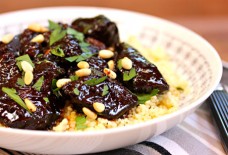Culture Vultures: Abu Dhabi Creates an Island of Fine Arts
The United Arab Emirates’ capital is spending $100 billion to diversify its oil-reliant economy into a tourist hub, which it hopes will attract 2.3 million visitors by 2013.
At roughly half the size of Bermuda, Saadiyat Island is the centerpiece of the emirate’s cultural efforts. The $27 billion, 27-square-kilometer, natural island will house the world’s greatest concentration of cultural institutions, including a branch of Paris’s Louvre museum, a Guggenheim museum, a National Museum, a Tadao Ando Maritime Museum and a Zaha Hadid-designed performing-arts center.
The island will also host several art schools, pavilions and other cultural franchises that will be able to house temporary exhibitions from around the world.
“The goal is to create institutions that would speak to our own culture and to the cultures of the world,” says Mubarak Al Muhairi, managing director of Abu Dhabi’s Tourism Development & Investment Co., which is spearheading the emirate’s cultural drive. “We recognize that we need expert help to achieve our aims.”
But such expertise does not come cheap. Abu Dhabi has paid the Louvre $1.35 billion—under a 30-year agreement—for the French museum to provide management expertise and some of the world’s most prestigious works of art on loan as well as the use of its name. The Louvre Abu Dhabi will be designed by French architect Jean Nouvel.
The British Museum has struck a multimillion-dollar deal to help launch the Zayed National Museum on Saadiyat. Under a 10-year contract, the British Museum will lend some of its treasures to the venue and help it set up and curate exhibitions.
U.S. architect Frank Gehry will design the Guggenheim Abu Dhabi, the Guggenheim Foundation’s most ambitious outpost to date. The 450,000-square-foot (41,800-square-meter) structure made up of a haphazard series of blocks will house a permanent collection of contemporary art with a strong focus on art education.
Although the first of these galleries won’t open until 2013, Abu Dhabi has already started an aggressive cultural program to whet the appetite of global art audiences. Last November, it held an inaugural art fair, Abu Dhabi Art, featuring 50 galleries from around the world, which attracted more than 15,000 visitors.
Abu Dhabi’s plans come at a time when contemporary Arab art is drawing growing interest from around the world, helped by the entrance of international auction houses such as Christie’s and Sotheby’s to the region. Although the global recession has hampered sales in recent months, the volume of modern and contemporary Arab and Iranian art at auction rose to $26 million in 2008 from $1.5 million in 2006, according to Art Tactic, which analyzes emerging auction markets.
Alongside growing curiosity, Abu Dhabi’s plans are drawing questions from some industry experts. “A lot of people are wondering who is actually going to go to these museums and what Abu Dhabi is going to put inside them,” says Georgina Adam, editor-at-large for the London-based Art Newspaper. “Is Abu Dhabi doing this just because it can?”
Others accuse Abu Dhabi of buying its culture—a claim TDIC fiercely denies.
“What the U.A.E. is really investing in is expertise and the future of its people,” says Mr. Al Muhairi.
As well as facing competition from existing Middle Eastern art hubs such as Egypt and Lebanon, Abu Dhabi will also have to fight off competition closer to home.
Just a two-hour drive away, the Dubai art scene has been growing for a number of years. Although a severe economic downturn in the emirate has stalled plans to develop its own cultural district, some observers say the slowdown and a near 50% drop in property prices may help fuel Dubai’s “organic growth.” They also shrug off competition from its larger and wealthier neighbor.
“We don’t see what’s happening in Abu Dhabi as competition,” says Ben Floyd, director and co-founder of Art Dubai, the Middle East’s first and largest annual contemporary art event that will take place this week. “Whatever Abu Dhabi does will only benefit Dubai. You can liken the Dubai and Abu Dhabi art scene to New York and Washington D.C.”
Unlike Abu Dhabi’s, Dubai’s art scene has grown from a “grassroots” level, says Mr. Floyd. Independent galleries have sprung up in the city state’s Al Quoz industrial zone. The emirate is now home to some 42 art galleries, compared with 10 in Abu Dhabi. “There is an art opening every night in Dubai,” says Mr. Floyd.
STEFANIA BIANCHI
Wall Street Journal


